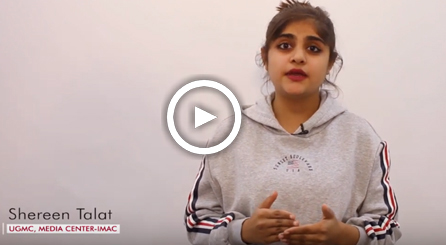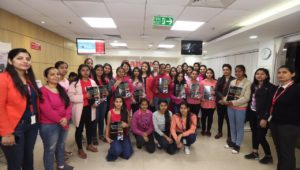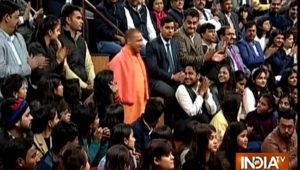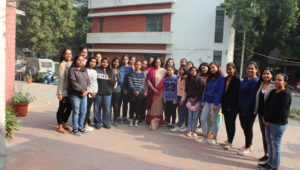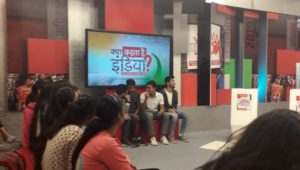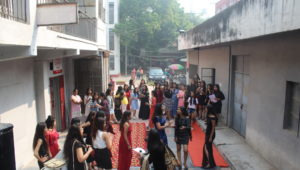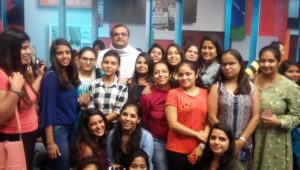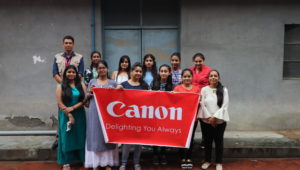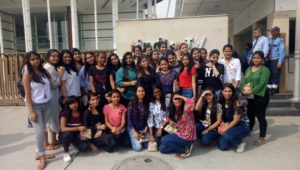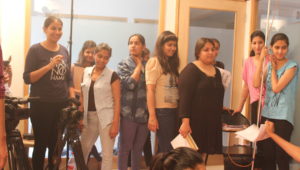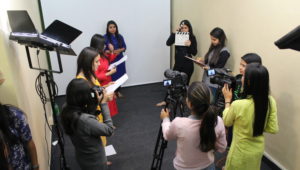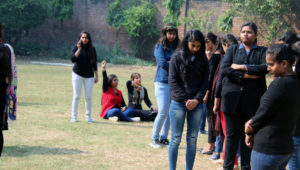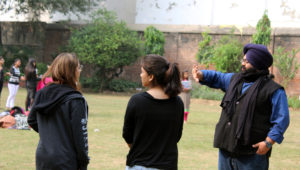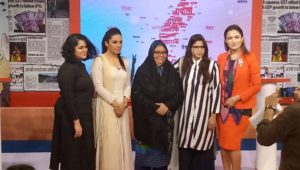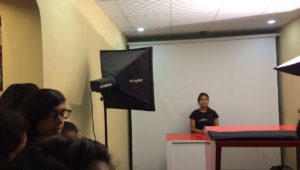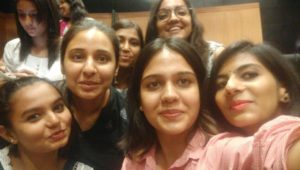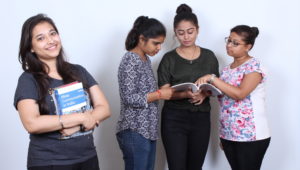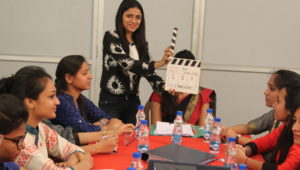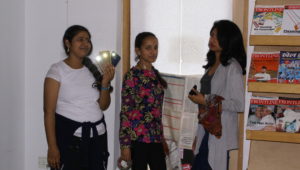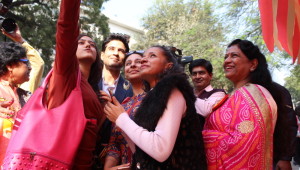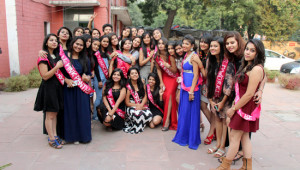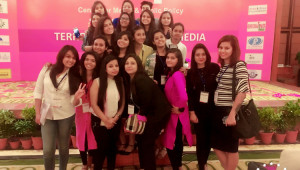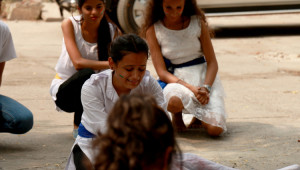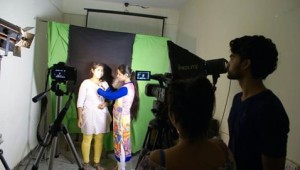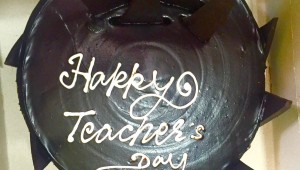Screenplay: – The finished script for a film, containing dialogue and explicit description of significant action. The degree to which screenplay includes camera instructions varies markedly; A script with full information about camera work may need little work to be turned into a shooting script.
Sequence: – A shot or series of shots or even scenes in a narrative film, not necessarily depicting action in one space and continuous time, but constituting clearly define segment of the film’s overall structure. A TRANSITIONAL series of rapid edited shots in classic narrative cinema is montage sequence, while a lengthy dialogue scene shot in long takes also constitutes a sequence.
Shot: – A continuous exposed strip of film made from a single uninterrupted run of the camera without a cut, regardless of the camera movement. movement of pro-filmic subjects or change of focus.
The smallest unit out of which scene sand sequences are made.
Action on the screen that appears to be photographed as one continuous run of the camera.
Shots are connected by CUTS or by transitional devices such as the dissolve, superimposition, fade and wipe.
EDITING: – Editing, is the connection of one or more shots to form a sequence and the subsequent connection of sequences to form an entire movie. It is process by which, SHOT film footage, is assembled to create sets of meaning not wholly contained in the separate shots themselves. The majority of editing appears on the screen as a series of CUTS with one scene editing and another beginning with no visible break, through such transitional devices as dissolves wipes etc.
LIGHTING: – The single most important aspect of cinematography is lighting. Light is necessary to create an image exposure on a frame of film or on a digital target (CCD, etc). The art of lightning for cinematography goes far beyond basic exposure, however, into the essence of visual storytelling. Lightning contributes considerably to the emotion response an audience has watching a motion picture. The control of light quality, color, direction and intensity is a major factor in the art and science of cinematography.
CINEMATOGRAPHY: – Cinematography, is the discipline of making lighting and camera choice when recording photographic images for the cinema. It is closely related to the art of still photography, though many additional issues arise when both the camera and elements of the scene may be in motion.
DEPTH OF FIELD: – The area in which all objects picked up by the camera lens appear in focus. The factors influencing the depth of field are subject-to-camera distance, focal length of the lens, and f-stop. Depth of focus, however, is a measurement of how much distance exists behind the lens wherein the film plane will remain sharply in focus. It can be viewed as the flip side of depth of field, occurring on the opposite side of the lens.
FOCAL LENGTH: – The distance between the secondary principle point in the lens and the plane of the imaging device. The longer the focal length, the narrower is the angle of view.
NTSC: – National Television Standards Committee. A group of business and engineers originally created to decide on early standards for color and black and white televisions in the U. S. The NTSC system is also used in Japan. Other television standards around the world include PAL (most of Europe) and SECAM (France, part of Africa and Russia).
VIDEO: – Video is the technology of electronically capturing, recording, processing, storing, transmitting, and reconstructing a sequence of still images which represent scenes in motion. Video technology was first developed for television systems, but has been further developed in many formats to allow for consumer video recording. Video can also be viewed on through the internet as video clips or streaming media clips on computer monitors.
LIGHT TEMPERATURE
“Visible light” is commonly desired by its color temperature. A traditional incandescent light source’s color temperature is determined by comparing its hue with a theoretical, heated black-body radiator. The lamp’s color temperature is the temperature in Kelvins at which the heated black-body radiator matches the hue of the lamp.
SOME COMMON EXAMPLES:
1700 K : Light of matches
1850 K : a candle
2800 K : tungsten lamp (ordinary household bulb whatever its power)
3350 K : studio “CP” light
3400 K : studio lamps, photofloods,
5000 K : Daylight
5500 K : average daylight, electronic flash (can vary between manufacturers)
5770 K : effective sun temperature
6420 K : Xenon arc lamp
6500 K : daylight
9300 K : TV screen (analog)
28000 – 30000 K : a lightning bolt [1]
WHITE BALANCE: -The electronic process of defining white lit by a light source of specific color temperature. This assures the correct balance of red, green, and blue. Because these colors are used to create all other colors in television, white balancing a camera enables you to bring the colors in line for the existing lighting conditions. Also refers to a camera control that accurately sets light levels on a white surface.
LINEAR EDITING: – Linear video editing is the process of selecting, arranging and modifying the images and sound recorded on a video tape whether captured by a video camera or recorded in a studio. Until the advent of computer based non-linear editing in the early 1990s “linear video editing” was simply called “video editing”.
The bulk of linear editing is done simply, with two machines and a device to control them. To perform linear editing, following are required:
- Two VCRs (video tape machines), preferably with AV (audio and video) outputs. If outputs are not available, then RF (aerial) outputs might be used.
- In the absence of another VCR, a camcorder can be used as the second VCR.
- At least one video monitor, but preferably two. Professional monitors are beast but one can use televisions if necessary.
- Connecting cables.
- The tapes (s) you wish to edit and a blank tape to edit onto (this will become the master tape).
ASSEMBLE EDITING: -Assemble editing is so called because shots are assembled one at a time in sequential order. This is where the concept of “linear” editing comes from- assemble editing only works when shots are added in a strictly linear fashion. Sometimes one needs to unset a new video clip over top of existing video footage. For example, on a lengthy shot of a person speaking and one would like to insert a few cut away shots to break it up and make it more interesting. If it is attempted using assemble editing, one will get a horrible picture disturbance at the end of the edit. Also, the audio from the new footage will replace the existing audio ——- in this situation this would not be desirable. But this can be achieved by insert editing —- a method of inserting new video over old video with clean beginning and end points. One can also add new pictures while keeping the original audio. In similar fashion, new audio (like background music) can be added (inserted) on an existing video. One thing to note with insert editing is that it must be done over the top of pre- recorded footage (or stable black). This is because insert editing uses the synch pulse of the underlying video. If you try to insert edit over unrecorded video tape the picture will be unstable.
NON-LINEAR EDITING
A non-linear editing system (NLE) is a video editing (NLVE) or audio editing (NLAE) system that can perform random access on the source material. Video and audio data are first digitized to hard disc or other digital storage devices. The data is either recorded directly to the storage device or is imported from another source. Once imported they can be edited on a computer using any of the wide range of software.
In non-linear editing, the original source files are not lost or modified during editing. Professional editing software records the decision of the editor in an “Edit Decision List (EDL)” which can be interchanged with other editing tools. Many generations and variations of the original source files can exist without needing to store many different copies allowing for very flexible editing. It also makes it easy to change cuts and undo previous decisions simply by editing the edit decision list (without having to have a actual film data duplicated). Loss of quality is also avoided due to not having to repeatedly re-encode the data when different effects are applied. Compared to the linear method of tape-to-tape editing, non-linear editing offers the flexibility of films editing with random access and easy project organizations. With the edit decision lists, the editor can work on low-resolution copies of the video.
ASPECT RATIO : -The ratio of the vertical to the horizontal image size. This is usually 3:4.
BETACAM & BETACAM SP: -Beta Cam was first introduced in 1982. It is currently geared for broadcast use, although there have been some less expensive models destined more for industrial use. Pictures you will get using a BetaCam system (or other component format) will generally be markedly superior to those you would get using any of the preceding formats. Colors in particular come out looking much more vibrant and objects appear three-dimensional. The superiority of the beta cm shots comes partly from the technical aspects of the tape format but also in large part because of the use of superior optics and other camcorder and VTR components (and generally better operators!).
The difference between BetaCam and BetaCam SP, introduced in 1986, is in the tape. Betacam SP uses a metal tape and is an improvement over BetaCam.
Betacam cassettes are large. Ninety minutes cassette measures 5.5 by 10 inches (14 by 25 cm). Typically BetaCam field units (camcorders or dockable decks) handle only smaller cassettes with shorter lengths of tape (30 minutes and less). These smaller cassettes are 4 by 6 inches (10 by 16 cm) in size.
CONTROL TRACK: -A linear track consisting of 30-or60-Hz pulses, placed on the bottom of video tape that aids the proper playback of the video signal.
TIME CODE: -SMPTE/EBU time code (or just “time code”) is an eight digit code that allows you to specify, among other things, precise video and audio editing points. A designated time-code point (set of numbers) cannot vary from one editing session to another or from one machine to another. The eight numbers like 03:05:29:11 simply means 3 hours, 05 minutes, 29 seconds and 11 frames.
LTC: -Longitudinal Time Code. It is recorded with a fixed head on a designed track on the beta tape.
VITC: -Vertical Interval Time Code. These are time code numbers recorded in one or more of the unused lines in the TV signal.
LIGHTING RATIOS: -Unless each of the lights being used in a lighting situation is at the proper intensity, any lightning approach——-will not work. Since the key light is the dominant light on the subject, it must be stronger than the fill light. In color production the fill should be about one- half the intensity of the key.
This key to fill brightness difference is expressed in terms of a lighting ratio. If the key light is twice as the fill, the ratio will be 2:1, which is the standard for most TV applications. At the same time, some lighting directors, especially in TV news, prefer to make the key and fill the same intensity, resulting in a flat, high-key effect. Using the 2:1 ratio, if the key light is 2000 lux, the fill will be 1000 lux; if the key light is 90 foot-candles (FC) the fill light would be 45 FC. Although many lights may be used in a scene, the lightning ratio refers to the ratio between just two lights: the key and the fill.
With difference (in f-stops) required between key and fill light intensities
1:1 – no difference (flat lighting)
2:1 – one f-stop (for general color photography, videography)
3:1 – one and two-thirds f-stops (for general black and white photography)
4:1 – Two f-stops (for low key dramatic effect)
8:1 – Three f-stops (for a very low-key dramatic effect) Because of the video contrast range limitations, for ratios beyond this the dark areas will probably just be rendered black, without discernible detail.
A simple way of establishing lightning ratios is by controlling the distance between the lights and the subject. Sometimes it’s desirable to minimize or smooth out the surface detail of subject matter. If highly diffused key and fill lights are used close to the camera there will be a flattering of the appearance of subject matter and a minimizing of surface detail and texture. Reducing the key-to-fill lighting ratio to 1:1, with the key intensity equal to the fill intensity, adds to this flat lighting effect
Although form and dimension are sacrificed in flat lighting, this type of lighting can be useful in minimizing wrinkles and skin problems, and in creating a soft, flattering effect for the human face. This could be very important in a cosmetic commercial, for example.
In contrast, by increasing the key-to-fill- ratio to 1:5 and beyond , surface detail and texture will be emphasized—especially if a hard key light is used at an angle from65 to 85 degree off to one side.
BACK LIGHT INTENSITY: – To provide the subtle rim of light sound around subjects the back light has to be slightly brighter than the key. In the case of an on-camera person, back light intensity will depend on the hair color and clothes. Subject who have brown hair and clothes in the mid-grey range will require a back light one and one half times the intensity of the key. Assuming a key light intensity of 1,500 lux , the back light would then be 2,250 lux. If you don’t have a meter that reads in lux or foot-candles, you can simply move the back light slightly closer to the subject than the key light, or until you see the desired subtle rim of light around the subject. A person with dark hair and clothes will, take more back light than a blond wearing light clothing. Be careful to observe the effect on a monitor or in a well-adjusted camera viewfinder.
BACKGROUND LIGHT INTENSITY: -Because the background is of secondary importance to the center of interest, it should receive a lower level of illumination. Generally, the intensity of background light should be about 2/3 the intensity of light key. This will insure that the central subject matter stands out slightly from the background. You can get two-thirds of any number by multiplying it by two and dividing the result by three. Therefore, if the key is 2,000 lux, the light falling on the background should measure about 1,300 lux. If you are using a photographic meter, you can set the background light 1/1 to 2/3 of an f-stop less than the key light. Since backgrounds are typically one dimensional (flat) and of secondary importance to the main subject matter, the placement of the lights and their angles are not critical. But, the light across the backgrounds should be even – especially if you are using chroma key. By walking across the background area with an incident light meter, you can find dark or bright spots.
SUBJECT TO BACKGROUND DISTANCE : -Shadow on backgrounds from mic boons, moving talent, etc., can be distracting and annoying. Background lights will lighten, but normally not eliminate, shadows. However, by moving subjects 3 meters (9 or more feet) away from a background, you will find (if the key is at an elevation of 45 degrees) that shadows will end up on the floor, out of sight, instead of on the black wall behind the subject. Sometimes, however, it’s necessary for talent to move in close to a background. An example would be someone explaining a chart on a wall. The use of a large soft light would render the shadows from the front lights almost invisible – if you don’t mind the soft, diffused look it will create in the video. Otherwise, you will just need to use a key angle that doesn’t create distracting shadows.
[This article is published by Media Center-IMAC in interest of student awareness and career guidance. Media Center-IMAC specializes in Post-Graduate/Under-Graduate diploma courses in Media Studies and Mass Communication & TV journalism. With practical oriented and industry specific course, Media Center- IMAC is a prominent institution in Delhi.
Our alumni have proven themselves in the media world and are currently working at prestigious media organizations and top news channels. Besides full time diploma courses, Media Center-IMAC also offers specialized certificate courses in TV reporting, Digital marketing, video editing, radio jockeying, photography and many more.
For more info, visit: http://www.mediacenterimac.com/
Or email at: mediacenterimac@gmail.com
Or call at: 011 43489010, 8076807939.]








